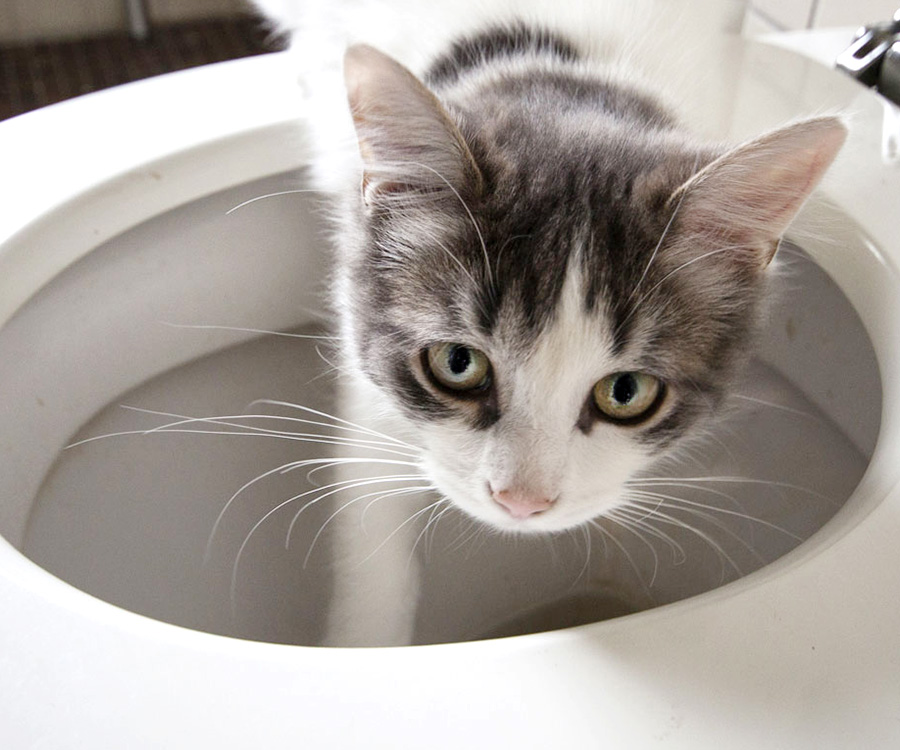Why You Shouldn't Flush Cat Poop Down Your Toilet - Preserve Your Plumbing System
Why You Shouldn't Flush Cat Poop Down Your Toilet - Preserve Your Plumbing System
Blog Article
Right here below you will find more quality tips regarding Can You Flush Cat Poo or Litter Down the Toilet?.

Introduction
As cat owners, it's essential to bear in mind how we throw away our feline close friends' waste. While it might appear hassle-free to flush cat poop down the bathroom, this practice can have damaging consequences for both the setting and human health.
Ecological Impact
Purging pet cat poop introduces hazardous microorganisms and parasites into the water supply, presenting a substantial danger to aquatic communities. These pollutants can negatively impact aquatic life and concession water quality.
Health and wellness Risks
Along with environmental issues, purging cat waste can also posture health and wellness threats to human beings. Feline feces might have Toxoplasma gondii, a parasite that can create toxoplasmosis-- a potentially serious illness, especially for pregnant ladies and individuals with weakened immune systems.
Alternatives to Flushing
Fortunately, there are more secure and a lot more liable ways to deal with feline poop. Consider the following choices:
1. Scoop and Dispose in Trash
One of the most common method of disposing of pet cat poop is to scoop it into a naturally degradable bag and toss it in the garbage. Be sure to utilize a dedicated litter scoop and deal with the waste quickly.
2. Use Biodegradable Litter
Select eco-friendly pet cat litter made from products such as corn or wheat. These clutters are eco-friendly and can be safely thrown away in the garbage.
3. Bury in the Yard
If you have a backyard, consider hiding pet cat waste in an assigned area far from vegetable gardens and water resources. Make certain to dig deep adequate to stop contamination of groundwater.
4. Set Up a Pet Waste Disposal System
Buy an animal waste disposal system especially made for cat waste. These systems utilize enzymes to break down the waste, decreasing smell and ecological effect.
Final thought
Accountable family pet ownership expands past giving food and sanctuary-- it likewise involves proper waste administration. By refraining from flushing pet cat poop down the bathroom and going with different disposal approaches, we can minimize our ecological footprint and shield human health.
Why Can’t I Flush Cat Poop?
It Spreads a Parasite
Cats are frequently infected with a parasite called toxoplasma gondii. The parasite causes an infection called toxoplasmosis. It is usually harmless to cats. The parasite only uses cat poop as a host for its eggs. Otherwise, the cat’s immune system usually keeps the infection at low enough levels to maintain its own health. But it does not stop the develop of eggs. These eggs are tiny and surprisingly tough. They may survive for a year before they begin to grow. But that’s the problem.
Our wastewater system is not designed to deal with toxoplasmosis eggs. Instead, most eggs will flush from your toilet into sewers and wastewater management plants. After the sewage is treated for many other harmful things in it, it is typically released into local rivers, lakes, or oceans. Here, the toxoplasmosis eggs can find new hosts, including starfish, crabs, otters, and many other wildlife. For many, this is a significant risk to their health. Toxoplasmosis can also end up infecting water sources that are important for agriculture, which means our deer, pigs, and sheep can get infected too.
Is There Risk to Humans?
There can be a risk to human life from flushing cat poop down the toilet. If you do so, the parasites from your cat’s poop can end up in shellfish, game animals, or livestock. If this meat is then served raw or undercooked, the people who eat it can get sick.
In fact, according to the CDC, 40 million people in the United States are infected with toxoplasma gondii. They get it from exposure to infected seafood, or from some kind of cat poop contamination, like drinking from a stream that is contaminated or touching anything that has come into contact with cat poop. That includes just cleaning a cat litter box.
Most people who get infected with these parasites will not develop any symptoms. However, for pregnant women or for those with compromised immune systems, the parasite can cause severe health problems.
How to Handle Cat Poop
The best way to handle cat poop is actually to clean the box more often. The eggs that the parasite sheds will not become active until one to five days after the cat poops. That means that if you clean daily, you’re much less likely to come into direct contact with infectious eggs.
That said, always dispose of cat poop in the garbage and not down the toilet. Wash your hands before and after you clean the litter box, and bring the bag of poop right outside to your garbage bins.
https://trenchlesssolutionsusa.com/why-cant-i-flush-cat-poop/

I'm certainly very taken with Don’t flush cat feces down the toilet and I'm hoping you enjoyed reading the entire post. For those who enjoyed reading our blog entry kindly don't forget to pass it around. Many thanks for your time. Kindly come visit our site back soon.
Click Here To Find Out More Report this page